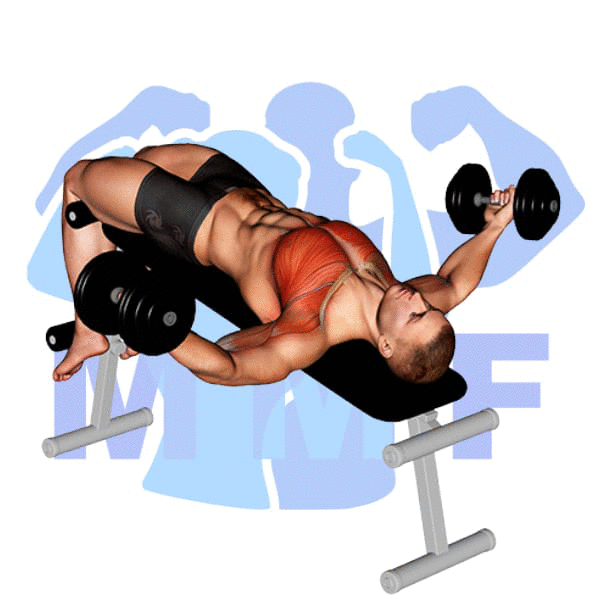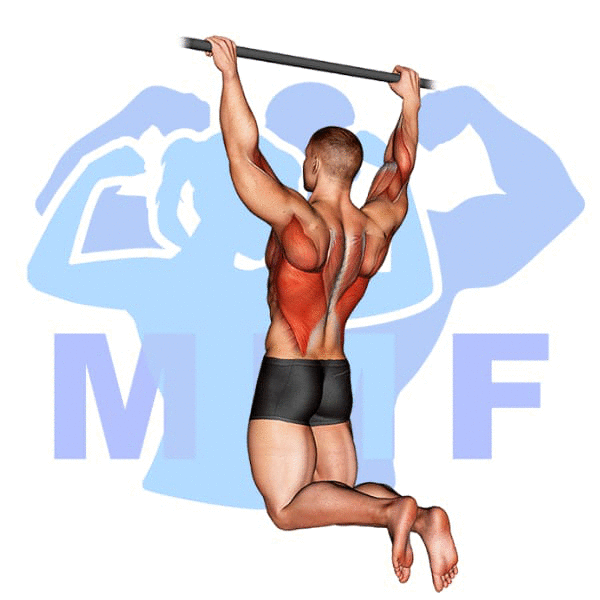Are you struggling to target your chest muscles effectively during your workouts, despite doing all the right exercises? Cable low fly could be the missing piece to your puzzle. Many people share the same frustration as you, as building a strong and defined chest requires specific and targeted exercises. The good news is, incorporating cable low fly into your routine can help you achieve the results you desire. In this post, we’ll guide you through the proper form and execution of cable low fly to maximize its benefits and help you get one step closer to your fitness goals.
Cable Low Fly Summary
- Primary Muscles: Pectoralis Major – Sternal
- Secondary Muscles: Biceps Brachii, Deltoid – Anterior, and Pectoralis Major – Clavicular
- Equipment: Cable Machine with Two Single D-Handles
- Mechanics Type: Isolated
- Force: Push
- Utility: Auxiliary

Cable Low Fly Instructions
- Attach two handles to pulleys opposite one another and set them nearly parallel to your chest.
- Then, grab a handle in each hand while standing between the pulleys.
- Maintain your torso erect, bend your elbows slightly while internally rotating your shoulders, so your palms are slightly down.
- Next, pull the handles together in front of you down toward your hips, keeping your elbows fixed.
- Then allow the handles to pull your arms back up and out to the side.
- Repeat for these cable low flys for a full set.
Video Tutorial
Cable Low Fly Muscles
Target (Agonist)
- Pectoralis Major – Sternal
Synergists
- Biceps Brachii
- Deltoid – Anterior
- Pectoralis Major – Clavicular
Dynamic Stabilizers
- None
Stabilizers
- Gluteus Medius
- Gluteus Minimus
Antagonist Stabilizers
- None

Benefits of Cable Low Fly
The Cable Low Fly is an excellent exercise for targeting the Pectoralis Major – Sternal, a muscle located in the chest. This exercise helps to strengthen and tone the chest, and can also help to improve posture. When performed correctly, the Cable Low Fly works to develop strength and stability in the chest, as well as helping to increase muscular endurance. Additionally, this exercise can be performed at various angles to target different parts of the chest. This makes it a great exercise for those looking to add variety to their strength training or fitness routine.
Tips for Performing Cable Low Fly
Your at the right place if you’re motivated to enhance your cable low fly execution. These tips will get you more from of this amazing workout, and help you reap all the benefits it has to offer. You can strengthen your chest muscles, and even lower your risk of experiencing an injury. Let’s begin and explore how these suggestions will benefit you.
- Make sure to use proper form: Ensure that the elbows remain slightly bent throughout the exercise, and that the arms are extended in a straight line with the torso. This will help maximize the effectiveness of the movement and reduce risk of injury.
- Maintain control: Keep the speed of the movement under control to ensure that each repetition is performed with precision and accuracy. This will help to ensure good form and maximize the benefits of the exercise.
- Focus on form: Concentrate on keeping the shoulders back and down and engaging the core throughout the movement. This will help to keep good posture while performing the exercise and make it more effective.
Benefits and Tips Video
Frequent Mistakes To Avoid
When it comes to executing cable low fly, avoiding typical errors can be the difference between a productive workout and a debilitating injury. Also, in order to maximize your benefits of the exercise, proper form is required. By preventing these frequent mistakes, you will improve your ability to achieve your desired results. However, take it easy, it’s not as challenging as it might seem. By knowing the mistakes to avert and taking the right actions, you may complete the exercise safely and successfully. So it is time for you to maximize your results from this exercise and enjoy the benefits of a successful workout.
- Not providing adequate instruction: When conducting the Cable Low Fly exercise, it is important to provide clear and detailed instruction on how to do the exercise correctly. Without proper instruction, participants may not be able to perform the exercise safely and may risk injury.
- Not monitoring form: It is also important to monitor the form of participants throughout the exercise. Poor form can increase the risk of injury and lead to ineffective results.
- Not being encouraging: During the Cable Low Fly exercise, it is important to provide encouragement and support to participants in order to keep them motivated and ensure they are getting the most out of the exercise. If they do not feel supported, they may become discouraged and lose interest in continuing the exercise.
Find More Cable Exercises Here
Variations and Complementary Exercises
There are many other exercises that you can do to work the same muscles as Cable Low Fly. Here are some variations, complementary, or alternative exercises that you can incorporate into your routine:
Decline Dumbbell Fly
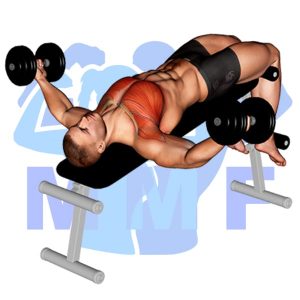
Decline Dumbbell Fly is an effective exercise for targeting the chest muscles. It is a great complementary or alternative exercise to Cable Low Fly as it focuses on the same muscle group. The Decline Dumbbell Fly is performed by lying face up on a decline bench and holding a pair of dumbbells in each hand. The arms are then extended above the body with the palms facing each other and the elbows slightly bent. The arms are then slowly lowered towards the body, until the elbows are just below shoulder level, and then raised back up to the starting position. This exercise helps to build strength and muscle mass in the chest, as well as increasing overall muscular endurance.
Decline Dumbbell Twist Fly

Decline Dumbbell Twist Fly is a great complementary or alternative exercise for the Cable Low Fly. This exercise works the chest and back muscles, as well as the shoulders, in a slightly different way than the Cable Low Fly. The decline angle of the bench helps to target the chest and back muscles, while the twist motion of the dumbbells emphasizes the shoulders. This exercise will help to create balance between all of the upper body muscles, and it can be used to supplement or even replace the Cable Low Fly in a strength training program.
Dumbbell Fly

Dumbbell Fly is a great complementary or alternative exercise to the Cable Low Fly. This exercise is done by lying on a flat bench with a dumbbell in each hand. The arms should be extended out to the sides and the palms should be facing each other. From this position, bring the dumbbells together, squeezing your chest muscles as you do. This exercise works the chest muscles in a similar way as the Cable Low Fly, but it also increases the range of motion, which can help to further target the chest muscles.
Check Out These Top Cable Exercises
Incline Dumbbell Fly

Incline Dumbbell Fly is an effective exercise that can be used to target the chest muscles. It is an alternative or complementary exercise to Cable Low Fly as it allows for a greater range of motion, enabling the user to increase muscle activation and maximize gains. Incline Dumbbell Fly is performed in a similar manner to Cable Low Fly, but with a slight incline to the bench. This increases the range of motion for the user and allows for a greater chest contraction. Additionally, Incline Dumbbell Fly can be used as an accessory exercise to Cable Low Fly, allowing for increased muscle activation and strength gains.
Incline Dumbbell Twisted Flyes

Incline Dumbbell Twisted Flyes are a great complementary or alternative exercise to the Cable Low Fly. This exercise targets the chest, shoulders, and triceps muscles in a unique way. It involves holding two dumbbells in each hand and lying face-up on an incline bench with the palms facing in. From here, you lift the weights out to the sides, twisting your wrists so that your palms face away from each other at the top of the movement. This exercise is a great way to add variety to your chest workouts and can be used to increase strength and build muscle.
Low Cable Fly
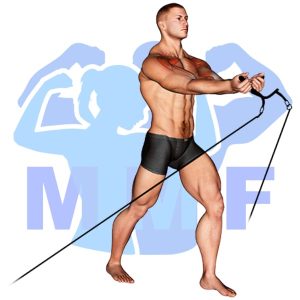
The Low Cable Fly is a great alternative or complementary exercise to the Cable Low Fly. This exercise is performed by standing between two cables and setting the arms in a wide position. Then, with the palms facing each other, the arms are brought together as if performing a hug and then released back to the starting position. This exercise works the chest muscles and helps to build strength and stability in the shoulder joints. The Low Cable Fly is a great way to target the chest muscles in a controlled manner with minimal stress on the shoulder joint.
Find More Chest Exercises Here
Opposing Complementary Exercises
To further complement the exercise Cable Low Fly, it is beneficial to incorporate exercises that target the opposing muscle groups. These exercises work to strengthen the opposing muscles and help stabilize the body while performing the Cable Low Fly. Below are a few exercises that target the opposite muscles:
Seated V Bar Cable Row

The Seated V Bar Cable Row is an excellent exercise for strengthening the back muscles, particularly those of the lats, traps and rhomboids. It is a great complementary exercise to the Cable Low Fly, as it works the opposing muscle group, targeting the back instead of the chest. The Seated V Bar Cable Row requires you to pull the barbell towards your chest while keeping your back straight, which helps to isolate and strengthen your back muscles. In addition, the seated position allows for greater stability, allowing you to perform the exercise with more control and precision. This makes it an excellent choice for adding strength and stability to your back muscles.
Underhand Dumbbell Row
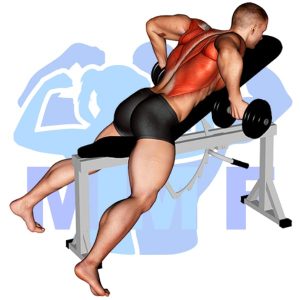
The Underhand Dumbbell Row is a great complementary exercise to the Cable Low Fly. It is an upper body exercise that works the back muscles, specifically targeting the lats, rhomboids, and traps. This exercise will help to create balance in the upper body by working the opposite muscle group of the Cable Low Fly which works the chest. When performing this exercise, it is important to keep the shoulders back, chest up and core tight while focusing on keeping the elbows close to the body and pulling the dumbbells up towards the chest. By pairing these two exercises together, you will be able to get a full body workout that targets both the pushing and pulling muscles for maximum results.
Barbell Incline Row

The Barbell Incline Row is a great complementary exercise to the Cable Low Fly. It targets the opposing muscle group, the back, and helps to create a balanced physique. This exercise strengthens the upper back muscles, including the latissimus dorsi, rhomboids and trapezius. The incline angle of the barbell also puts additional emphasis on the upper portion of these muscle groups. Furthermore, this exercise helps to increase stability and balance throughout the entire body. The Barbell Incline Row helps to develop a strong and toned back that is complimentary to the Cable Low Fly’s strengthening of the chest muscles.
Sculpt Your Chest Muscles with Cable Low Fly!
When it comes to building a well-rounded and balanced chest, adding cable low fly exercises to your workout routine can be a game changer. This exercise targets the lower portion of your chest muscles, allowing you to create that coveted chest definition and separation. Not only that, but cable low fly exercises can also help improve your overall upper body strength and posture. Just make sure to use the proper form and technique to get the most out of this exercise.
References: Wikipedia | ExRx.net | PubMed.gov | Comprehensive List of Chest Cable Exercises


